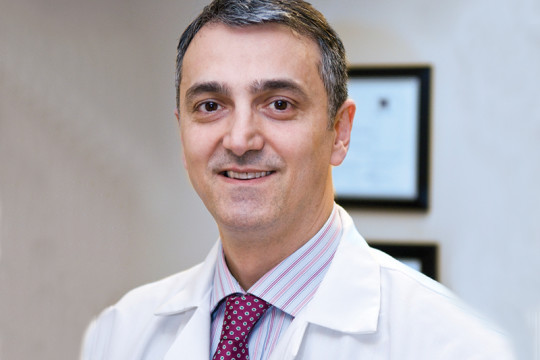
The call comes into the hospital’s emergency department, letting doctors know that an ambulance is on its way with the victim of a possible ST-segment Elevation Myocardial Infarction (or STEMI). The ER physician electronically receives the victim’s EKG, which he sends to Dr. Celaj’s phone for him to review. If the attack is a STEMI, Dr. Celaj and his team (comprised of nurses, technicians and a physician assistant) rush to the hospital, assembling within 30 minutes.
Meanwhile, the patient, once stabilized in the ER, is transferred to the cardiac catheterization lab, where medication and catheters are used to open the patient’s artery. Time is of the essence (i.e., “time is muscle,” according to the slogan used by the American Heart Association). “Unless you can open the artery within 90 minutes, the outcome is worse in terms of mortality,” says Dr. Celaj.
An estimated 1.4 million Americans suffer heart attacks each year, approximately 400,000 of which are STEMIs. A STEMI is caused when a blood clot forms, completely blocking an artery in the muscle. This can result in damage that affects a large area of the heart and extends deep into the heart muscle. Percutaneous coronary intervention (PCI) is often the first treatment option. This can involve both angioplasty and stenting. Clot-busting medications may also be used.
The non-STEMI (or NSTEMI) patient is seen about three times as frequently by the cardiac catheterization laboratory according to Dr. Celaj. In addition to appearing different on the EKG, the heart damage with a NSTEMI does not extend through the full depth of the heart muscle. Additionally, these heart attacks are caused by differing amounts of clotting proteins and platelet blood cells. Clot-blotting medications are not always effective and although PCI may be part of the treatment, opening the artery within a short time is always a priority. More involved diagnostic tests may be necessary to determine eventual treatment.
New EP Lab to Open
The cardiac catheterization laboratory is scheduled to open an Electrophysiology (or EP) Lab, with Dr. Salim Baghdadi, a fellowship-trained electrophysiologist, to offer electrophysiology services beginning this spring. This will provide patients in the community with a large range of arrhythmia services without ever leaving the Bronx.
Dr. Baghdadi will perform diagnostic and treatment procedures for patients who, because of the flow of electrical impulses that coordinate the heart’s contractions, can experience fast or irregular heartbeats. The use of sophisticated cardiac catheters, coupled with state-of-the-art computerized technology, will allow him to “see” into a patient’s beating heart.
“An irregular heartbeat can be harmless or it can be very dangerous, even fatal,” says Dr. Baghdadi. “It’s a sign that the heart is not pumping blood as efficiently as it should, which affects the delivery of oxygen throughout the body.” Common symptoms are palpitations, dizziness and syncope. The normal heart beats between 50 – 100 times per minute, or approximately 100,000 times a day. An abnormally rapid or irregular heartbeat may occur when an electrical short circuit occurs within one of the heart’s four chambers. The resulting arrhythmia’s fast or irregular heartbeat, a “tachycardia,” can affect people of any age.
Some patients may have their condition controlled by medication. However, in cases where the medication – commonly, beta blockers, calcium channel blockers and antiarrhythmic drugs – doesn’t work or the patient seeks a cure rather than a treatment for the condition, the EP Lab services will soon be available.
 GIVING
GIVING (718) 960-9000
(718) 960-9000